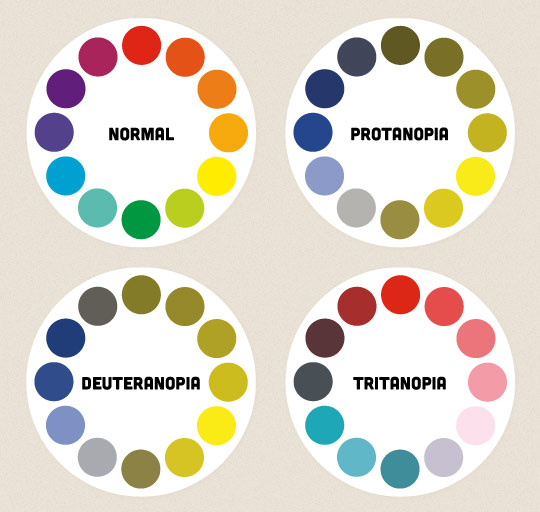Contrary to what a lot of people might think, colour-blindness does not equal "inability to perceive any colour" (That condition is called Monochromacy and is only an extremely rare type of colour-blindness). People suffering from this condition are usually able to see almost all colours in the spectrum.
The problem is that some colours that may not look similar at all to you may look the exact same to a CB Sufferer.
This is because colour-blind people have weaker brightness relation. The reason is in the cause of colour-blindness:
The human eye comprises of Rods and Cones.
Rods are responsible for perception of Dark from Light, Forms from Space and Movement.
Whereas, Cones only perceive colour, with different cones for Red, Green and Blue. When cones are defected it leads to colour-blindness.
Types of Colour-Blindness
There are a few different types of colour-blindness, depending on which colours they have trouble with.
The most common type is the difficulty to distinguish between Red and Green. (Deuteranopia or Protonopia)
Trouble between Blue and Yellow is much rarer. (Tritanopia)
And inability to perceive any colour (Monochromacy) is extremely rare.

Next up: Field Research.
No comments:
Post a Comment